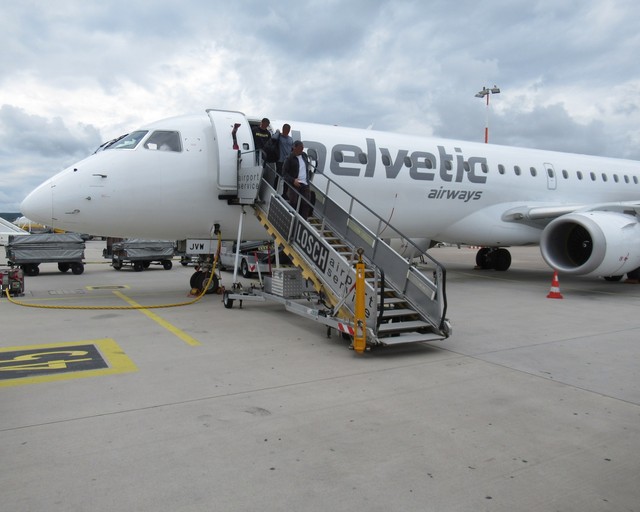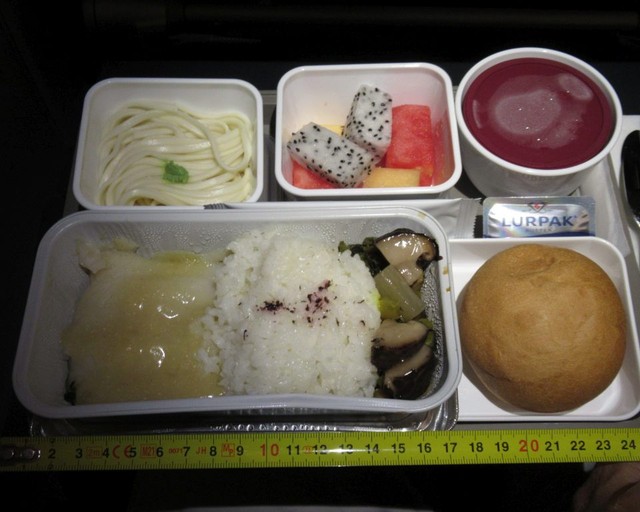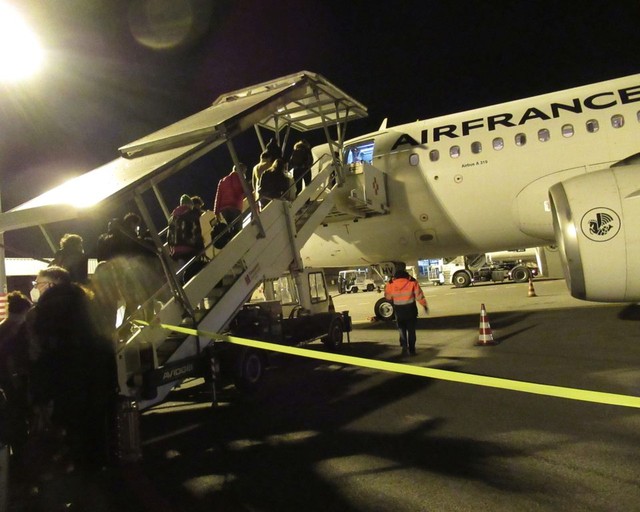This is another vintage FR on the KWL-PEK route, after that the one posted just before this one by Dor here, on a flight back in 2013. My flight was even older, in Year Three Before Flight Report, and I take this excuse to have fewer pictures of the flight itself.
The purpose of the trip was a week of vacation in Yangshuo 阳朔. The only pictures I took on the way in were in PEK, with this passenger who had dutifully removed his shoes before squatting on a seat – something you would see in Japan and Taiwan too.
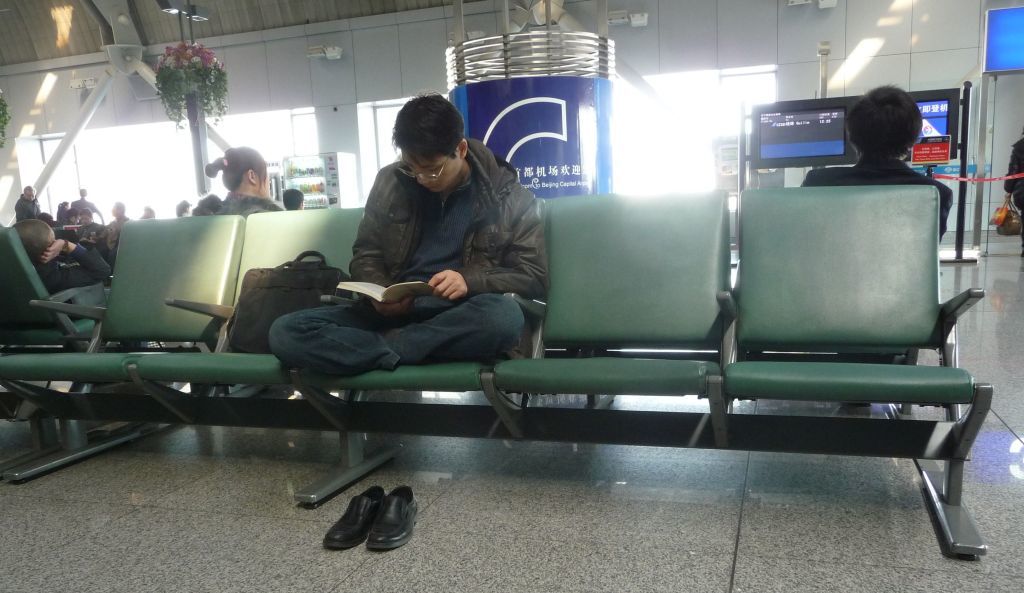
The flight at the gate next to mine was going to Kunming, capital of Yunnan, in the very south of China and home of many minorities. These women wore clothes that you would not find on Han Chinese, and only in really backwater China do men still wear this kind of blue vest from the Mao times.
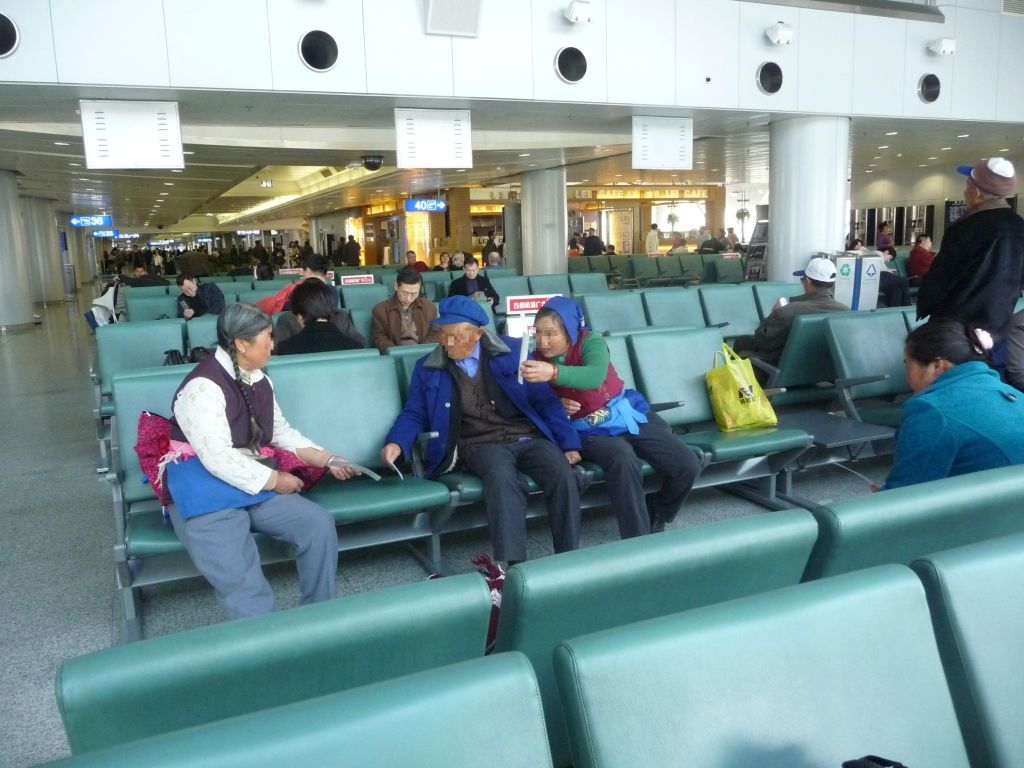
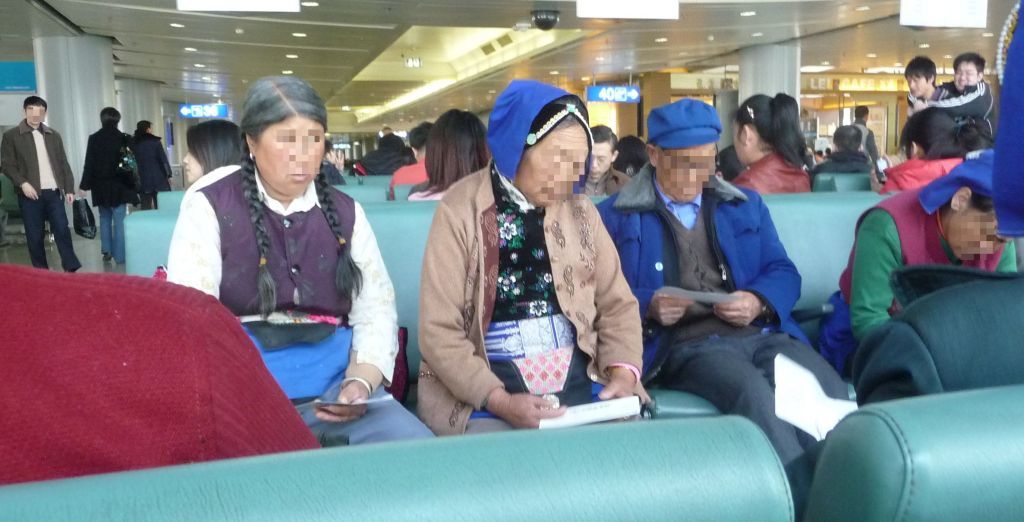
One week later, we were heading back to Beijing. Yangshuo is about 75 km from Guilin Airport, and is a much better place to enjoy the typical karstic relief that the region is famous for.

Yangshuo is now a very popular tourist destination, and there is an excellent expressway to the airport, with its fait share of oversized trucks.
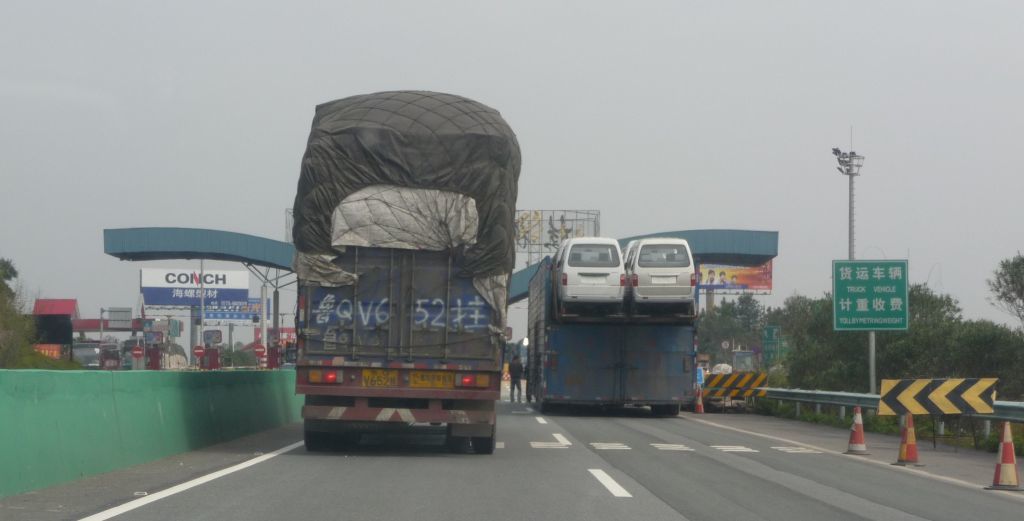
Arrival in KWL (Guilin 桂林, above the terminal), decorated with palm trees with highly exotic colors.

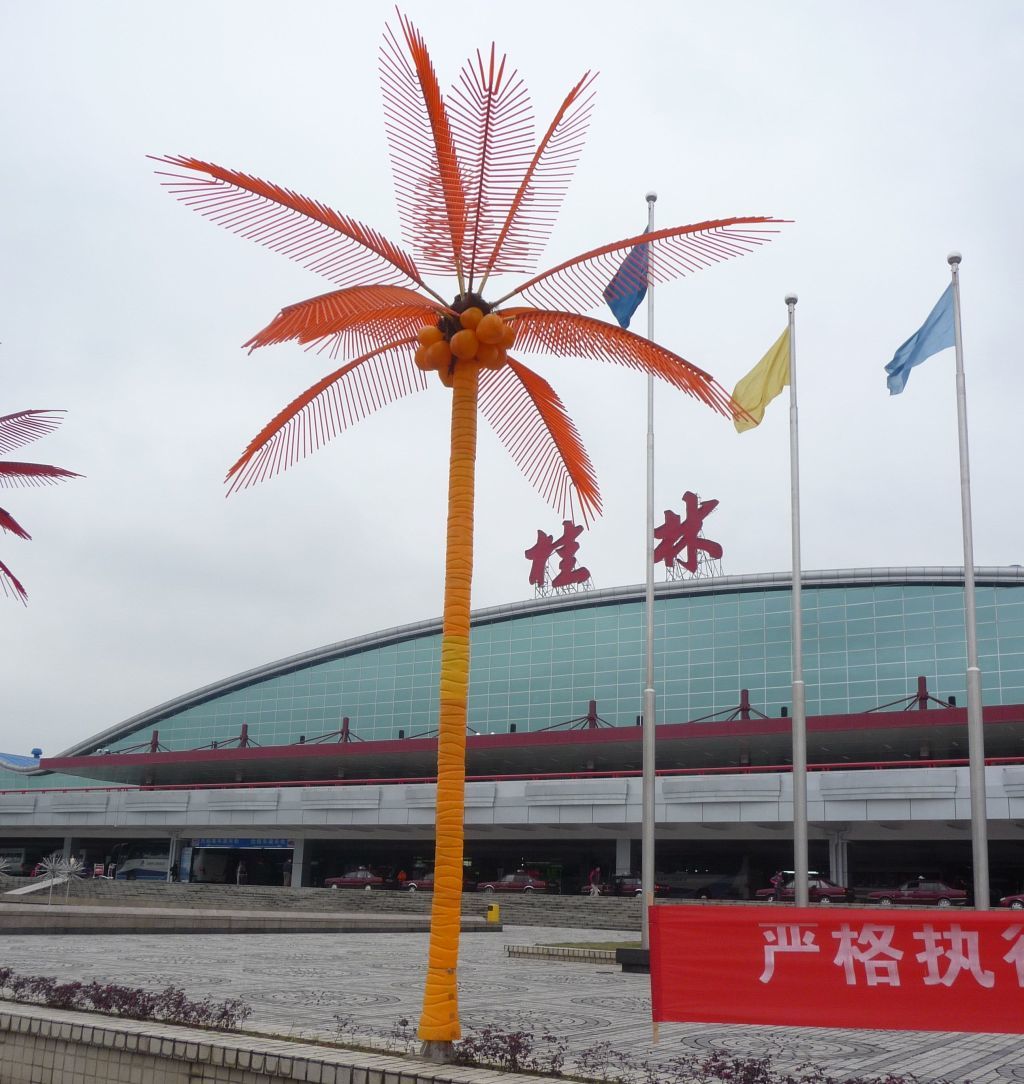
I did not know it then but flying Grand China Air (because the schedule was convenient for me) was a pioneering choice for Flight Report. See the tail of the aircraft: this was indeed the same design as the much better known nowadays Hainan Airlines. The logo’s font is also the same. That airline was then eighteen months old and had been created by HU to merge half dozen smaller airlines that it was merging with.

A curiosity of Chinese and China is that texts are usually written from the front to the rear on vehicles – be they buses or planes – with the result that they are written from right to left on the right side, like here (compare with the logo of Grand China Air). Chinese, like Japanese, can be written indifferently from left to right, right to left or top to bottom, without any impact on reading ease. Some Chinese unfamiliar with English do not realize that this not true with Western languages, with amusing results on some buses.
The cabin of this 737 was so similar to that of other Chinese airlines that I only paid attention to the advertising on this antimacassar which is a reminder of the importance of the lucky number 8 for the Chinese. According to my research at the time, it cost 250,000 euros to reserve from the telephone operator the only number with eight 8s for a given prefix.

It was such an ordinary flight that I have no record of the meal which was probably very similar to those served on domestic flights in China. I did not have much Flight Reporter experience at the time…
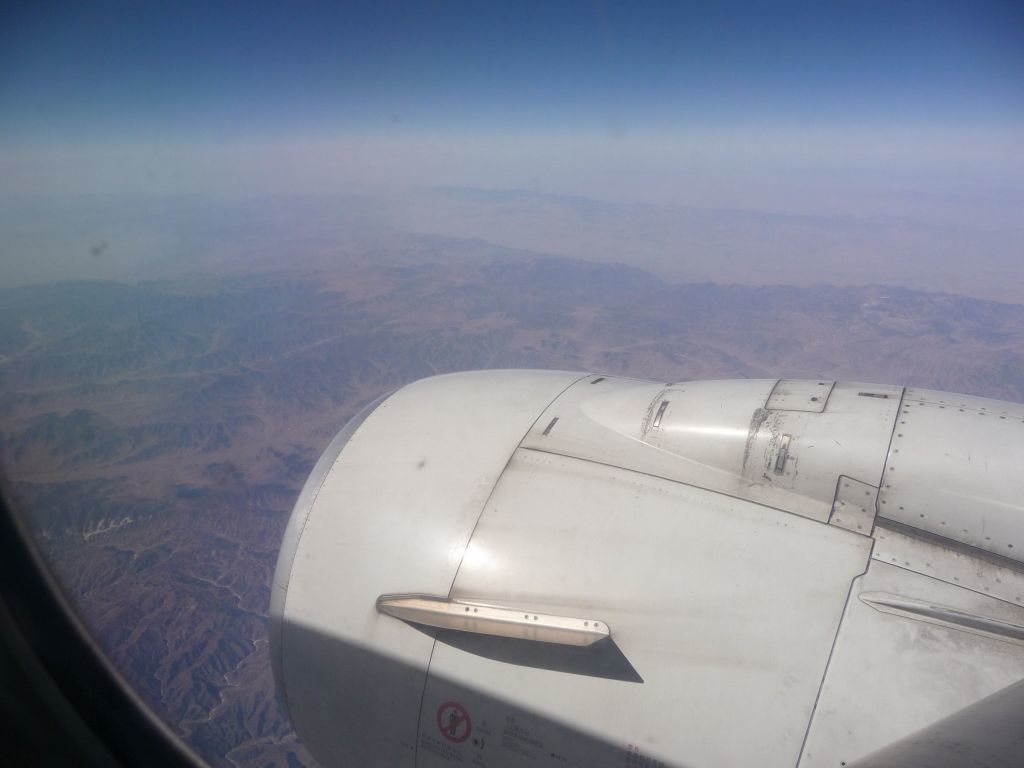
My pictures timestamping proved that the plane reached its parking position at 15:44, twenty minutes ahead of schedule. A scheduled 2h55’ flight duration for the 1,750 km KWL-PEK route had ample margin.

This was the old livery of Hainan Airlines, and there too, the writing went from front to rear on the fuselage.
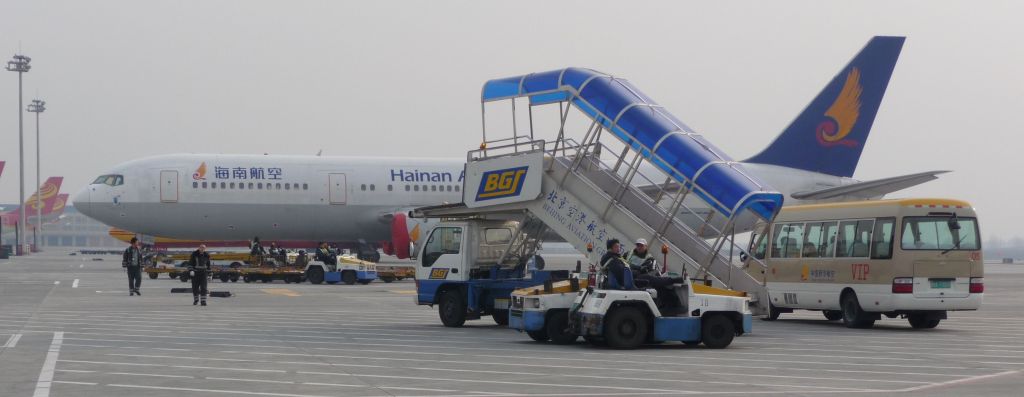

Since the wing unfortunately masks most of the name in Chinese in the picture above, I recovered a picture taken during a previous trip.

I am not sure Xinhua Airlines 中国新华航空 is a name which can still be seen on Chinese tarmacs, because it was meant to merge with others in the HNA group. China observers are familiar with this name, though : meaning "New China", this is also the name of the official Chinese news agency. To the best of my knowledge, it is unrelated to the airline.

The round terminal seen from the tarmac is a reminder that Hainan Airlines operates in PEK from Terminal 1, the least convenient because furthest away from the brand new Terminal 1 where all non-Skyteam flights are located, and a quarter of an hour walking distance from Terminal 2 which has an Airport Express (train) station.

According to the original invoice, CN was then 10-15% cheaper than the major Chinese airlines on that route, for basically the same service. Inflation in China (and to a lesser extent the reevaluation of the Chinese yuan) in the past six years has made the price double in euros, even if the fight is bought from a Chinese travel agency.
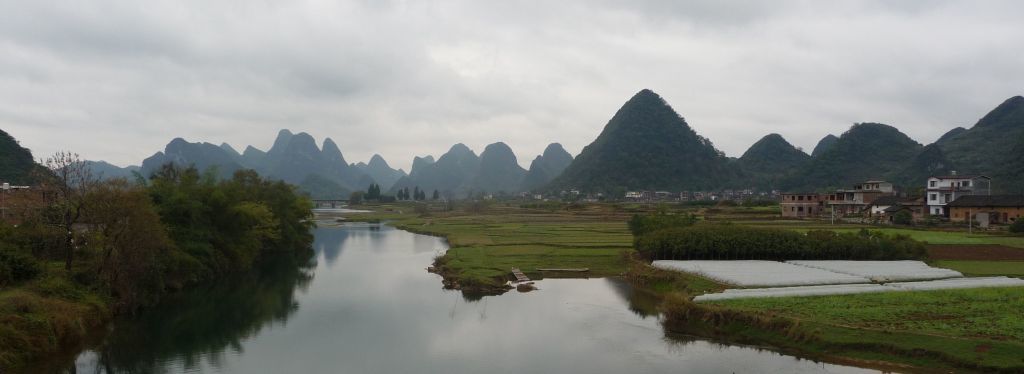
You have guessed from the picture above that what follows is a tourist bonus on Yangshuo. Winter is the dry season in China, but it was not obvious, because we had a miserable winter – cold and wet – most of our time there. The good news about this bad weather was that most tourists had cancelled their trip, and we had the place to ourselves (it can be crowded in the high season).
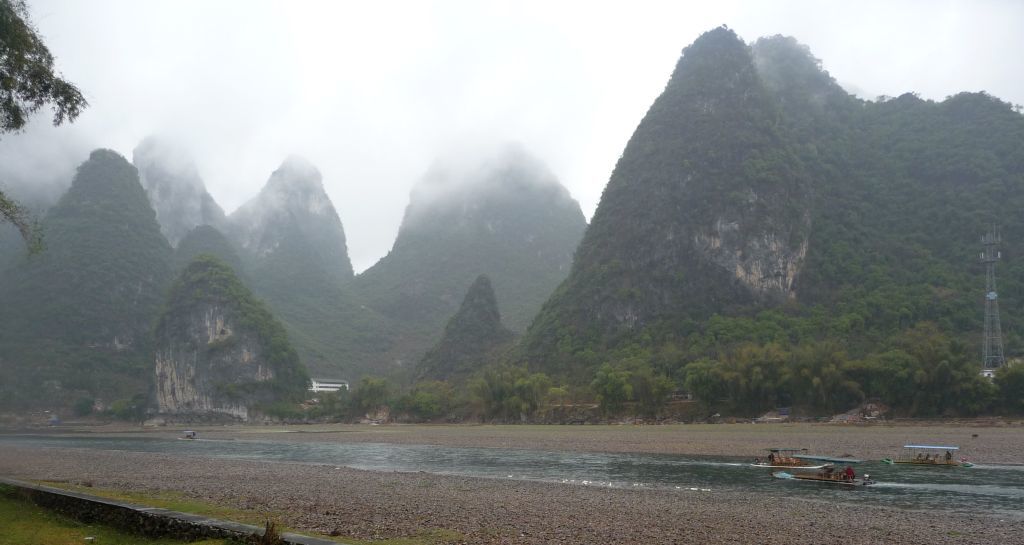
The good news about the dry season and the rainy weather was that these tourist boats could not operate due to the shallow water on the River Li, leaving the space to much more picturesque bamboo rafts.
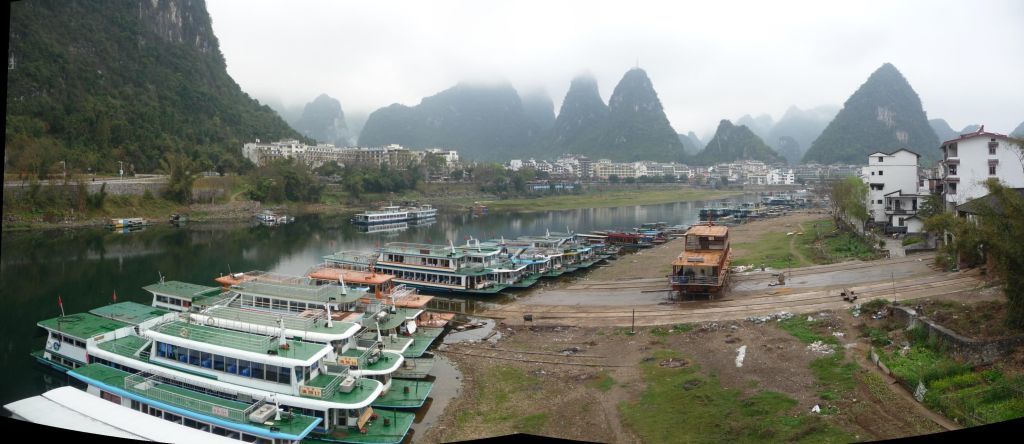
The countryside around Yanshuo is worth exploring with a bicycle. Getting really out of the way can be tricky when the path becomes marginally wider than your tires in the middle of the rice fields, but you can chance upon an impeccably authentic dragon dance.
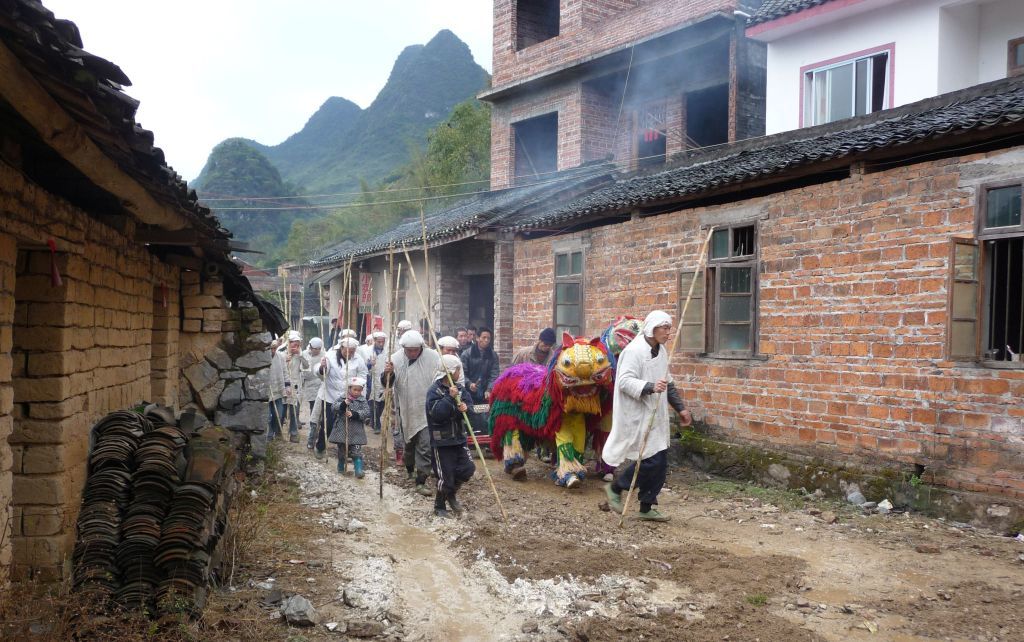
The night show in Yangshuo may not an old tradition (although it draws from an old legendary love story), but this is a must see.

The story of Liu Sanjie was made into a movie in the 1920’s, many decades before the show called “Impressions Liu Sanjie” was created by Zhang Yimou, one of China’s most renowned film directors. Set on the River Li with the karstic hills as a backdrop, it is an oniric marvel of lighting and traditional costumes – I saw the same in neighboring Guizhou province in local festivals.

No, this dancer on the moon was not naked, but with the distance, you could wonder.
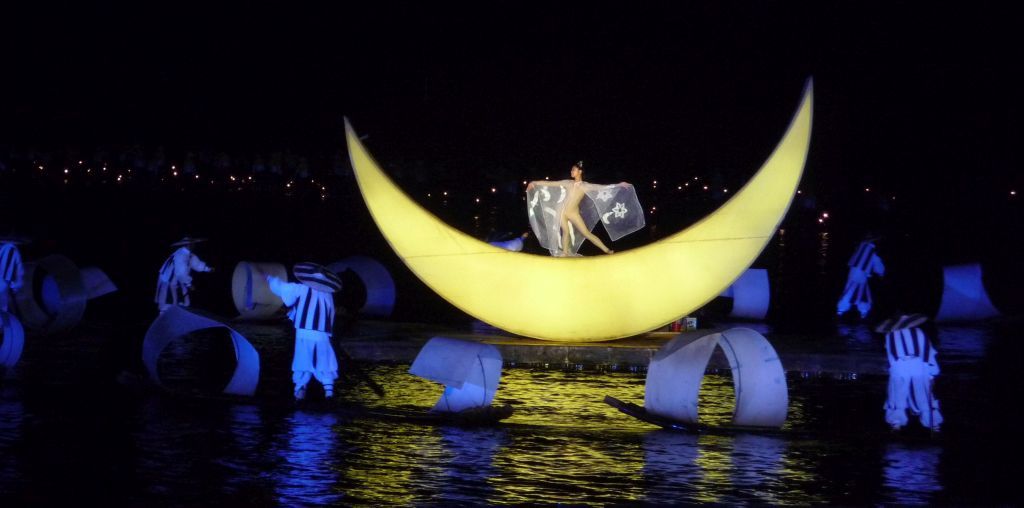

It did not really matter that it rained – see the disposable plastic raincoats of the spectators in the foreground.
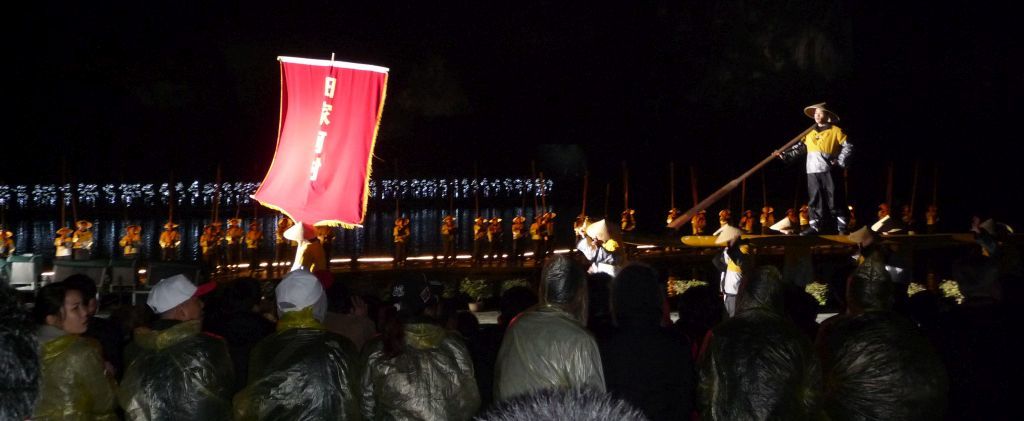
Over an hour of pure enchantment, until the final salutes of the more than 600 participants to the show.

Thanks for reading this!

